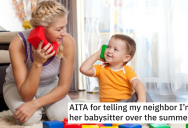How the Same Emoji Varies Across Platforms
by twistedsifter

Researchers at the University of Minnesota have recently published a study investigating the potential for miscommunication using emoji across various platforms, networks and devices.
In the conversation below between a Google Nexus user and an iPhone user, we can see how the same emoji is rendered differently on each device, leading to confusion and misinterpretation.

To investigate whether “emoji font” diversity can cause miscommunication, my colleagues and I conducted a survey to compare how people interpret emoji. We did this for 5 platform renderings (Apple, Google, Microsoft, Samsung, LG) of 22 of the most popular anthropomorphic (i.e., human-looking) emoji. For each emoji rendering, we asked the participants to describe the emoji rendering in words. We also asked them to assess the emotional meaning or sentiment of each rendering on a scale from -5 (strongly negative) to 5 (strongly positive).
– Hannah Miller, GroupLens

Like it or not, emojis have become an integral component in human communication, especially amongst the youth. Understanding how the same emoji, rendered differently, can impact emotion, sentiment and connectedness is important.
Below you can see how 22 common emojis are displayed differently across devices.

The study was conducted by GroupLens, a research lab in the Department of Computer Science and Engineering at the University of Minnesota specializing in recommender systems, online communities, mobile and ubiquitous technologies, digital libraries, and local geographic information systems.
The full research paper, “Blissfully happy” or “ready to fight”: Varying Interpretations of Emoji, can be viewed as a pdf here.
The paper will be officially published at AAAI ICWSM in May. For more information, visit GroupLens.
Categories: DESIGN, SCI/TECH
Tags: · communication, emoji, language, research, science, smartphone, texting




